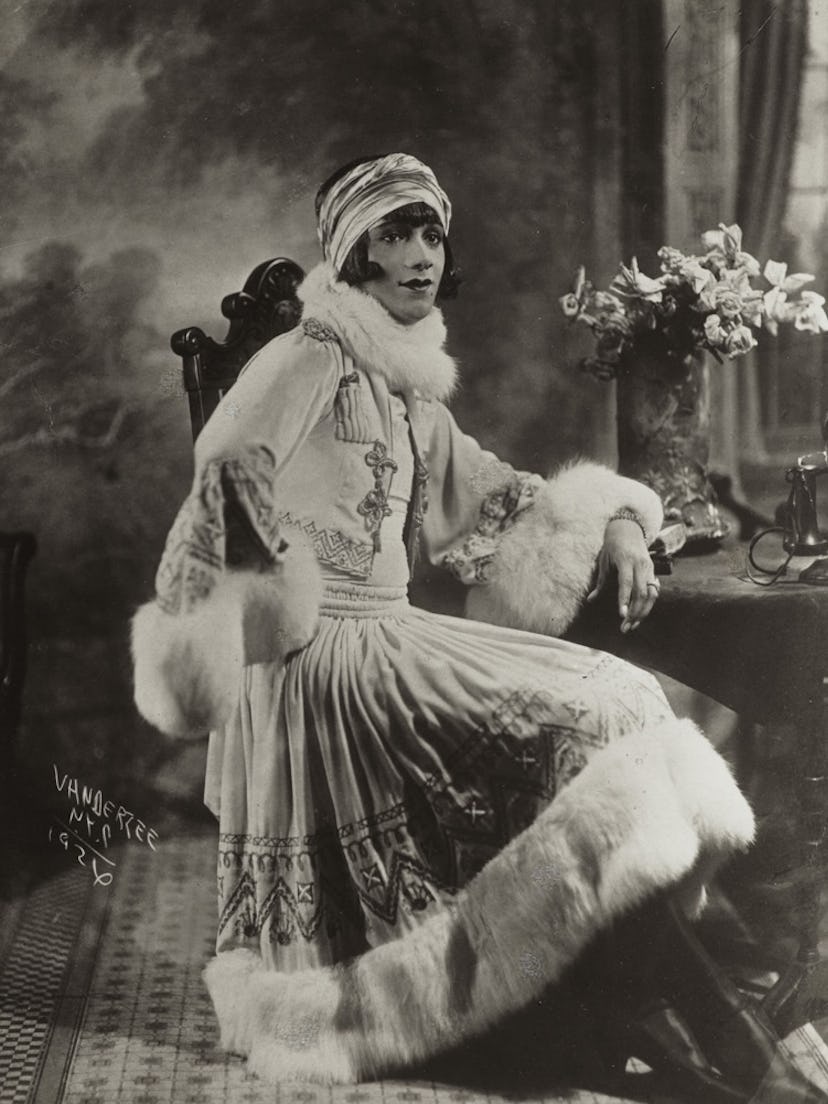
At a time when government-led efforts to censor and rewrite history are intensifying, two new art exhibits are doing what legislation can’t: preserving the lives and legacies of Black queer people. The first, “In the Life: Black Queerness—Looking Back, Moving Forward,” currently on view at the Carr Center in Detroit, presents an 80-year odyssey through Black queer culture and history. The exhibit draws its name from the coded phrase “in the life,” which was a way of communicating queerness in early 20th-century Harlem. A second exhibit, “The Gay Harlem Renaissance,” is on view at the New York Historical Museum in Manhattan from October 10 through next March. As its name suggests, it explicitly highlights the vibrant and often overlooked contributions of queer people from that specific time and place, where LGBTQ+ culture and influence thrived.
Millions of dollars in federal grants to arts and culture organizations have been threatened or outright canceled under this administration, and other museums have had their works censored and collections audited. But this pair of shows stands as a testament to the art field’s ongoing, critical preservation of history.
Tylonn J. Sawyer, Strata Drawing 4: Cake Walk, 2023. Lavender pencil on paper.
“I see myself as a custodian of memory,” Patrick Burton, who co-curated In the Life with Wayne Northcross, tells W. “I’m also a cultural and civil rights activist. I’m always looking for ways to push past the inherited assumptions, boundaries, and prisons we’ve been handed, and to reveal what’s been hidden and obscured.”
In the Life was produced by non-profit Mighty Real/Queer Detroit, which also runs the Detroit Queer Biennial, of which the exhibit will be part of for its third iteration in June 2026. The show opens with Martini Marti (1945), a self-portrait by the late Detroit-born artist LeRoy Foster that depicts his femme persona. “I was so astounded by this image from 1945 of an artist celebrating his femininity in drag,” says Burton. In the portrait, Foster softly gazes over his shoulder, dressed in an ornate robe and satin headscarf. “It’s a very glamorous, beautiful photo. That was our starting point, and from there, we weave in and out of different moments in Black queer history, art, and culture.”
LeRoy Foster, Martini Marti (self- portrait), 1945. Archival print.
A more recent work, Other Countries (2025) by poet and painter Pamela Sneed, pays homage to the Black queer literary collective of the same name that thrived in 1980s New York. The striking watercolor painting reimagines a historic photograph featuring members of the collective, many of whom died from AIDS-related complications. Other works explore the fluidity and complexity of identity: Zanele Muholi’s Kiss captures a tender embrace between two women, while April Bey’s I Wouldn’t Call It Schizophrenia, but I’ll Be At Least Two People Today gestures toward the experience of living beyond binary definitions of self. “We wanted to explore intimacy, belonging, and self-determination,” says Northcross.
April Bey, I Wouldn’t Call It Schizophrenia, but I’ll be At Least Two People Today, 2022. Jacquard woven textiles, glitter, resin, metallic thread, on panel.
Allison Robinson, who curated “The Gay Harlem Renaissance” at the New York Historical, says the “show offers a really nuanced understanding of Harlem as an epicenter of Black LGBTQ+ life. It’s a beautiful look at the many people who shaped the Harlem Renaissance—on stages, in basements, at speakeasies, and in intimate rent parties.”
William L’Engle (1884-1957), Harlem, 1928
Unidentified maker, Rent party ticket, 1932.
Among the artifacts on display: a noisemaker advertising blues singer Gladys Bentley’s performances; artwork by Malvin Gray Johnson, a queer painter who richly documented the Great Migration; sculptures by Richmond Barthé who celebrated the beauty of the Black male form; and a recreation of a prize-winning gown from the Hamilton Lodge Ball, the largest drag ball on the East Coast, which was held in Harlem.
Unknown photographer, Gladys Bentley (1907-1960), ca. 1940. Silver and photographic gelatin on photographic paper.
Robinson hopes to show how the arts have served as a powerful way for Black queer people to express themselves and explore their identities. “By producing art, books, music, drag, and other works across genres, they invited the larger public to see Black people in ways that audiences might not have been used to at the time,” she says. “Their work was incredibly cutting-edge, and this exhibition is an opportunity to educate people about it.”
Claude McKay (1890-1948), editor, The Liberator, May 1922.
Both exhibitions are arriving at a pivotal moment in culture, when LGBTQ+ rights and representation are currently under attack across the country. The most notable example of many happened in July, when artist (and Michelle Obama portraitist) Amy Sherald canceled her show at the Smithsonian’s National Portrait Gallery in protest after the institution refused to display her artwork “Trans Forming Liberty,” which reimagined the Statue of Liberty as a trans person.
Northcross views “In the Life: Black Queerness—Looking Back, Moving Forward” as part of that conversation, while also offering a powerful counter-narrative to the ongoing cultural erasure. “The exhibition can be seen as a counterweight to the rising censorship that other institutions are experiencing,” Northcross says. “I do think that the show has something to say about the importance of visibility, and the idea that art is both a refuge and resistance. It doesn’t just represent identity, it insists on it. In times of attack, artists remind us that queer imagination is unstoppable.”